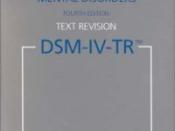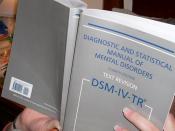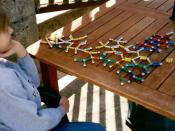Observe a special needs child/adults activity when they try to learn new information. Create a learning environment for them, considering three learning theories.
Autism is a pervasive developmental disorder that affects the functioning of the brain. The extent of the condition can range from acute to mild, and when someone is diagnosed with autism, they are said to be on the 'Autistic Spectrum.' Autism is found is both sexes, but is four times more likely to be found in boys than girls.
Autistic children are often innately withdrawn, both psychologically and socially thus having many problems with social interaction and communication. Such children will often feel intimidated in social situations and prefer to play alone and not interact with other children and find it difficult to form relationships. They will also feel uncomfortable if alterations to their environment or routines are made.
Teaching autistic children in mainstream educational settings is sometimes very difficult, as they will find it difficult to cooperate and relate to their classmates in group activities.
Autistic children find it notoriously difficult to understand facial expressions and predict the consequences of actions that are new to them.
One condition that is recognised as falling into the autistic spectrum is Asperger's Syndrome of High Functioning Autism (HFA). This is viewed as a milder form of autism, the person concerned being often above average academically. Unlike classic autism which is often diagnosed within the first three years of age, Asperger's syndrome is unlikely to manifest itself until the child is much older.
Section 299.80 of the Diagnostic and Statistical Manual of Mental Disorders (DSM-IV) defines Asperger's Syndrome as the display of six characteristics:Qualitative impairment in social interaction;The presence of restricted, repetitive and stereotyped behaviors and interests;Significant impairment in important areas of functioning;No significant delay in language;During the first three...


